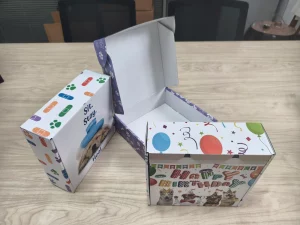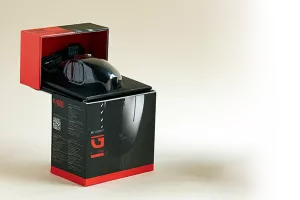In today’s world, the shift towards eco-friendly packaging is more important than ever. This article explores how a successful paper packaging case study can inspire businesses and consumers alike to embrace sustainable practices. By examining the rise of green packaging solutions and the innovative approaches taken by a leading company, we can learn valuable lessons for a more sustainable future.
Tabla de contenido
Principales conclusiones
- Sustainable packaging is crucial for reducing environmental harm.
- Consumers are increasingly choosing eco-friendly products over traditional options.
- Innovation plays a key role in making packaging more sustainable.
- Understanding costs and benefits helps businesses make better choices.
- Future trends show a strong move towards greener packaging solutions.
The Rise of Sustainable Packaging Solutions
Understanding the Environmental Impact
Sustainable packaging is becoming more important as we learn about its impact on the environment. Traditional packaging often ends up in landfills, causing pollution and harming wildlife. In contrast, sustainable options help reduce waste and lower carbon footprints.
Consumer Demand for Eco-Friendly Products
More and more people want to buy products that are good for the planet. This shift in consumer behavior is pushing companies to adopt sustainable practices. Here are some reasons why consumers prefer eco-friendly products:
- Healthier choices for themselves and the environment
- Desire to support responsible companies
- Awareness of climate change and its effects
The Role of Innovation in Packaging
Innovation is key to creating better packaging solutions. Companies are using new materials and technologies to make packaging that is both effective and sustainable. For example, the global sustainable packaging industry was valued at approximately 271.86 billion U.S. dollars in 2023 and is expected to exceed 393 billion U.S. dollars in the coming years.
The shift towards sustainable packaging is not just a trend; it’s a necessary change for the future of our planet.
By focusing on these areas, the packaging industry is moving towards a greener future, benefiting both businesses and the environment.
Case Study: Transforming the Packaging Industry

Background of the Featured Company
This case study focuses on a leading company in the packaging sector that has made significant strides towards sustainability. The company recognized the need for change and took bold steps to transform its operations.
Challenges Faced and Overcome
The journey was not without its hurdles. The company faced several challenges, including:
- High initial costs for new materials and technologies.
- Resistance to change from employees and stakeholders.
- Difficulty in sourcing sustainable materials.
Despite these challenges, the company persevered and found solutions to overcome them.
Key Strategies Implemented
To successfully transform its packaging processes, the company implemented several key strategies:
- Invertir en automated packaging systems to enhance efficiency and reduce waste.
- Collaborating with suppliers to source eco-friendly materials.
- Educating employees about the importance of sustainability in packaging.
The shift towards sustainable packaging is not just a trend; it is a necessary step for the future of our planet.
By focusing on these strategies, the company has not only improved its environmental impact but also positioned itself as a leader in the industry.
| Strategy | Impact on Business |
|---|---|
| Automated systems | Boosted productivity |
| Eco-friendly materials | Reduced carbon footprint |
| Employee training | Increased awareness |
This case study illustrates how a commitment to sustainability can lead to positive change in the packaging industry.
Innovative Approaches to Paper Packaging

Biodegradable Materials and Their Benefits
Biodegradable materials are becoming popular in the packaging world. These materials break down naturally, reducing waste in landfills. Many companies are now using these materials to create packaging that is both functional and eco-friendly. Some benefits include:
- Less pollution
- Reduced carbon footprint
- Improved brand image
Designing for Reusability and Recycling
Designing packaging that can be reused or easily recycled is crucial. This approach helps to minimize waste and encourages consumers to participate in recycling programs. Here are some key points:
- Use simple designs that are easy to take apart.
- Choose materials that can be recycled multiple times.
- Educate consumers on how to reuse packaging.
Technological Advancements in Production
Technology is changing how paper packaging is made. New methods allow for more efficient production and better quality. For example, 12 real-world examples of packaging innovation show how companies are using technology to create sustainable options. Some advancements include:
- Digital printing for custom designs
- Automated processes that reduce waste
- Smart packaging that informs consumers about recycling
The shift towards innovative paper packaging is not just a trend; it’s a necessary step towards a sustainable future. By embracing these approaches, companies can lead the way in reducing environmental impact and meeting consumer demands.
Economic Impacts of Sustainable Packaging
Cost-Benefit Analysis for Businesses
Sustainable packaging can lead to significant savings for companies. Investing in eco-friendly materials often results in lower waste disposal costs and can improve brand loyalty. Here are some key points to consider:
- Reduced material costs over time
- Lower waste management expenses
- Increased customer satisfaction and loyalty
Market Trends and Growth Opportunities
The demand for sustainable packaging is growing rapidly. Companies that adapt to this trend can benefit from:
- Access to new markets
- Enhanced brand reputation
- Increased sales from eco-conscious consumers
Long-Term Financial Benefits
According to a recent report, having a strong sustainability strategy can boost a company’s earnings before interest, taxes, depreciation, and amortization (EBITDA) by 4 to 6%. This shows that going green is not just good for the planet, but also for business.
Investing in sustainable packaging is not just a trend; it’s a smart business move that can lead to lasting financial success.
Lessons Learned from the Paper Packaging Case Study
Successful Practices and Their Implementation
- Focus on alternative materials: Using packaging made from alternative non-wood fibres can be just as recyclable as traditional wood fibre.
- Engage with stakeholders: Collaborating with suppliers, customers, and environmental groups can lead to better solutions.
- Invest in technology: Upgrading production methods can improve efficiency and reduce waste.

Common Pitfalls and How to Avoid Them
- Ignoring consumer preferences: Always consider what customers want in eco-friendly products.
- Underestimating costs: Be realistic about the expenses involved in switching to sustainable packaging.
- Neglecting education: Make sure everyone involved understands the benefits of sustainable practices.
Future Directions for the Industry
- Increased focus on innovation: The industry will continue to explore new materials and methods.
- Stricter regulations: Expect more laws promoting sustainable packaging.
- Growing consumer awareness: As people learn more about environmental issues, demand for eco-friendly options will rise.
The journey towards sustainable packaging is not just about changing materials; it’s about changing mindsets and practices across the entire industry.
The Global Movement Towards Eco-Friendly Packaging
The shift towards envases ecológicos is gaining momentum worldwide. As more people become aware of environmental issues, the demand for sustainable options is increasing. Here are some key points to consider:
International Regulations and Standards
- Many countries are introducing laws to limit plastic use.
- Standards for biodegradable materials are being developed.
- Companies must comply with these regulations to stay competitive.
Collaborations and Partnerships
- Businesses are teaming up with environmental organizations.
- Partnerships help share knowledge and resources.
- Collaborations can lead to innovative packaging solutions.
Consumer Education and Awareness
- Educating consumers about the benefits of eco-friendly packaging is crucial.
- Awareness campaigns can influence buying decisions.
- Consumers are more likely to support brands that prioritize sustainability.
The global eco-friendly packaging market size is expected to reach USD 498.29 billion by 2034, growing from USD 222.61 billion in 2023. This shows a strong trend towards sustainable practices in the packaging industry.
The Future of Paper Packaging in a Green Economy
Predictions for Industry Evolution
The future of paper packaging looks bright as more companies shift towards sustainable practices. Flexible paper packaging is gaining popularity because it provides similar protection as plastic but is made from renewable, fossil-free materials. This change is driven by both consumer demand and environmental needs.
The Role of Policy and Legislation
Government policies are becoming stricter about packaging waste. New laws encourage businesses to use eco-friendly materials. This means that companies must adapt quickly to stay compliant and competitive.
Innovations on the Horizon
Innovations in paper packaging are on the rise. Here are some exciting developments to watch for:
- Biodegradable coatings that enhance durability
- Envases inteligentes that can track freshness
- Recyclable designs that simplify disposal
The shift towards sustainable packaging is not just a trend; it’s a necessary step for a healthier planet.
As we look ahead, the paper packaging industry is set to evolve significantly, driven by innovation, policy changes, and a growing commitment to sustainability.
Conclusión
In conclusion, the journey from paper packaging to a greener future shows us that change is possible. By learning from successful examples, we can see how small steps can lead to big improvements for our planet. It’s clear that everyone can play a part in making the world a better place. Whether it’s choosing eco-friendly products or supporting companies that care about the environment, we all have the power to make a difference. Together, we can create a sustainable future that benefits both people and nature.
Preguntas frecuentes
What is sustainable packaging?
Sustainable packaging means using materials that are good for the environment. This can include things that can be recycled or are made from natural sources.
Why is there a growing demand for eco-friendly products?
More people are becoming aware of how their choices affect the planet. They want to buy products that don’t harm the environment.
How can businesses benefit from using paper packaging?
Using paper packaging can help businesses save money in the long run. It can also attract more customers who care about the environment.
What are some challenges companies face when switching to sustainable packaging?
Companies might struggle with finding the right materials or changing their production processes. They also need to educate their staff and customers.
What are some examples of innovative paper packaging?
Some new paper packaging is made from biodegradable materials that break down easily. Others are designed to be reused or recycled.
How does government policy influence packaging choices?
Government rules can encourage or require companies to use eco-friendly packaging. This can lead to more businesses making the switch.








